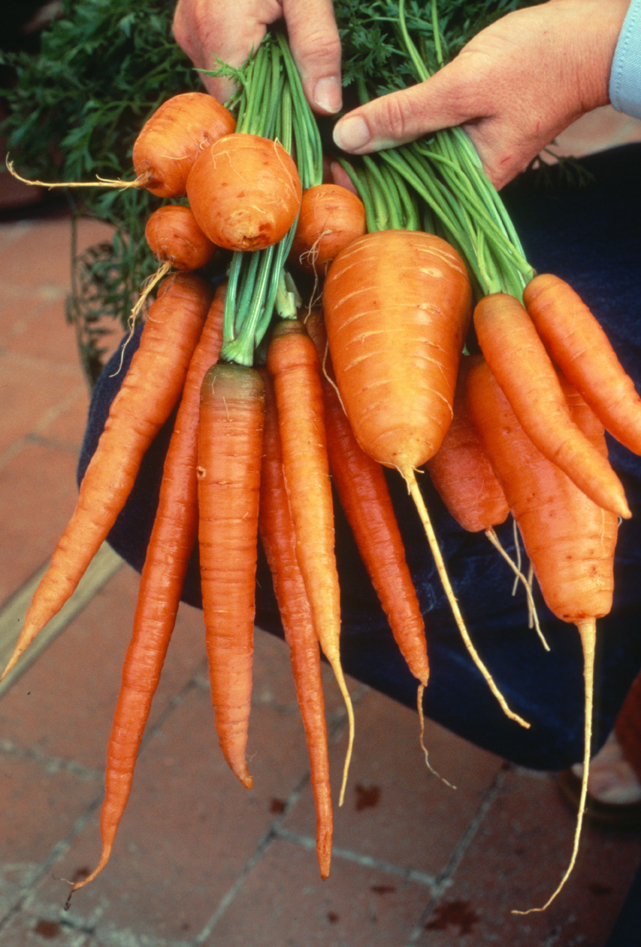2016 Year of the Carrot
While carrots are one of the top 10 most economically important vegetable crops in the world, they also are one of the most popular vegetables to grow in home gardens – and for good reason.
 Carrots are delicious, nutritious, versatile, and with just a little bit of know-how, this root crop is easy to grow.
Carrots are delicious, nutritious, versatile, and with just a little bit of know-how, this root crop is easy to grow.
It is “root” to tell a lie: While Vitamin A that is derived from Beta Carotene found in orange carrots does aid in overall eye health, you won’t be able to have full-fledged night vision from eating an abundance of carrots, as some have purported.
Your skin, however, CAN turn yellow from eating an abundance of carrots! Not to worry though, the yellowing will go away after a few weeks as long as you cut down on the carrot intake.
History:
The ancestor to the modern day carrot is believed to have originated in Afghanistan and was purple, scrawny, and pungent. Over time, cultivation by Greeks and Romans resulted in roots that were plumper, tastier, and came in shades of purple, red, and black. It wasn’t until the late 16 or early 17th century that the orange, appetizing carrots that we know today were bred by the Dutch in Europe.
Basic Types:
Carrots (Daucus carota) are members of the Apiaceae family, which also includes culinary plants such as anise, celery, coriander (cilantro), dill, and parsnips. They are biennials, meaning that they will flower in the second year of growth, but are typically grown as annuals (grown and harvested in the same year). There are several different carrot types and they are primarily divided up by shape.
Variety/Series Names:
The following are some of the more well-known types, along with their characteristics and links to NGB members websites for more information on ordering.
Chantenay – Conical, triangular shaped roots with broad shoulders and rounded tips. Sweet flavor makes it good for eating fresh.
Danvers – Cylindrical, thick roots that are often used to make carrot juice due to the high water content and low sugar content.
Imperator – Long, tapered roots with narrow shoulders. These are typically the carrots you would buy in a plastic bag at the grocery.
Miniature/Baby – Either small round roots (also called Planet-types) or cylindrical and short.
Myth debunked: Baby carrots that are purchased in a bag at the grocery are actually made from long, skinny carrots that have been cut.
Nantes – Cylindrical, “cigar-shaped” roots that are sweet and crispy.
Successful How-To-Grow:
Carrots are easy to grow from seed and perform best when directly sown into a garden bed or patio container. Ask your local nursery or garden center professional about varieties and how to grow.
Also, National Garden Bureau Members not only provide great products, but also great growing information. Click here for more information: ngb.org
